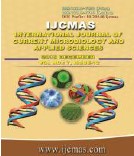


 National Academy of Agricultural Sciences (NAAS)
National Academy of Agricultural Sciences (NAAS)

|
PRINT ISSN : 2319-7692
Online ISSN : 2319-7706 Issues : 12 per year Publisher : Excellent Publishers Email : editorijcmas@gmail.com / submit@ijcmas.com Editor-in-chief: Dr.M.Prakash Index Copernicus ICV 2018: 95.39 NAAS RATING 2020: 5.38 |
India is home to a great variety of ethno-medicinally important plant species and is ranked sixth among 12 mega-diversity countries of the world (Joshi et al., 2001). Medicinal plants as a group comprises approximately 8000 species and account for around 80% of all higher flowering plant species of India (Samant et al., 2002). The Indian Himalayan Region (IHR) comprises of five biogeographic provinces i.e. Trans, North West, West, Central and East Himalaya and covers approximately an area of 591 thousand km2 (Rodgers and Panwar, 1998). The Himalayas are recognised as one of the global biodiversity hotspots where ecological, phyto-geographical and evolutionary factors favours high species diversity (Samant et al.,2003). It has an large altitudinal range (300-800m amsl) and supports a unique flora and fauna. About 18,440 species of plants (25.3% species endemic), 1748 species of medicinal plants (Samant et al., 2003) and 675 species of wild edibles (Samant and Dhar, 2002). Medicinal and aromatic plants (MAPs) are traded as both as raw material and as processed final products. The collection and more recently marketing of (MAPs) has provided an important source of income for communities living in the mountain areas (Rodgers and Panwar, 1998). The sustainably use of such plants in tied closely to future opportunities for high altitudes Himalayan communities.
 |
 |
 |
 |
 |